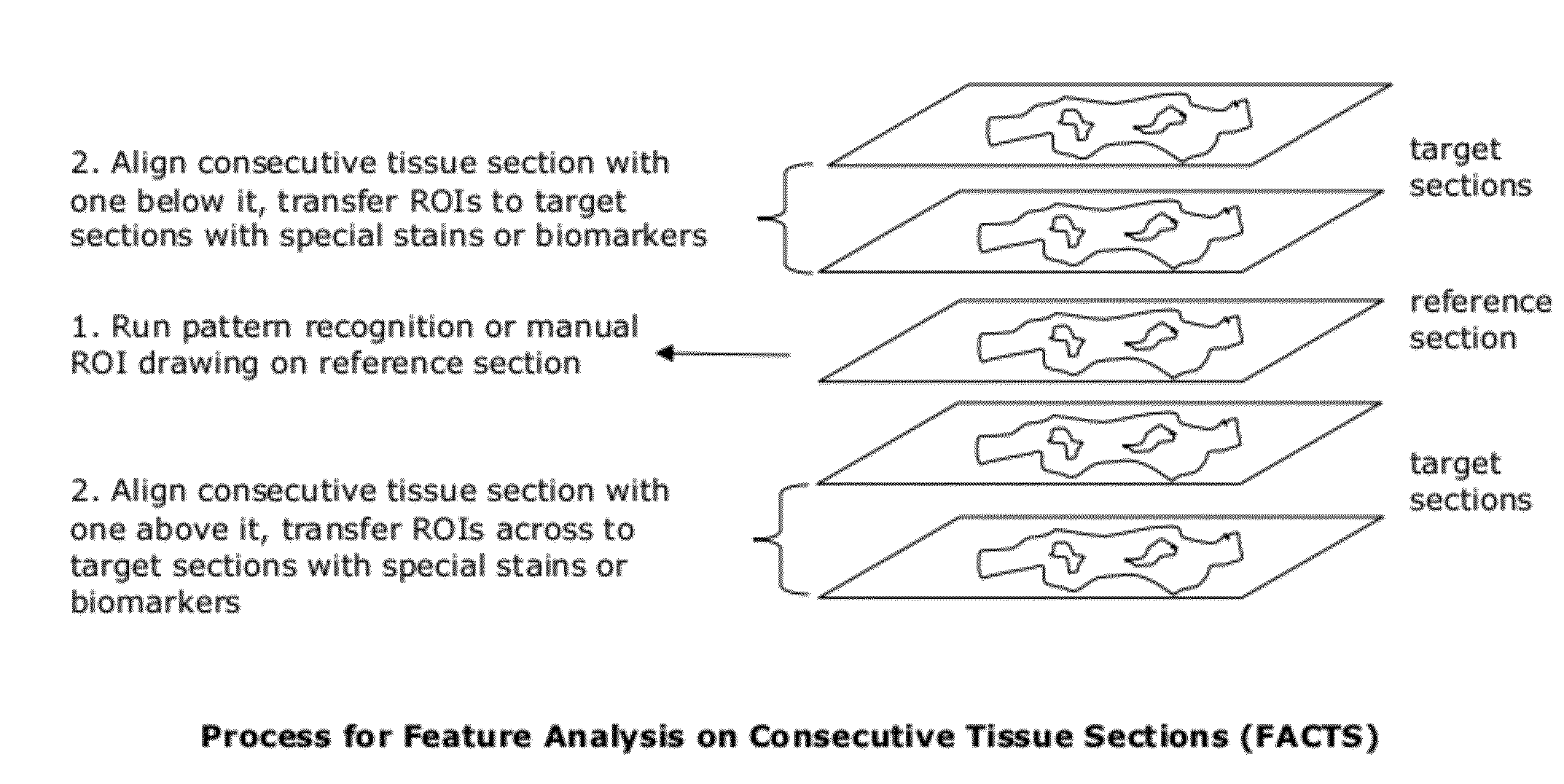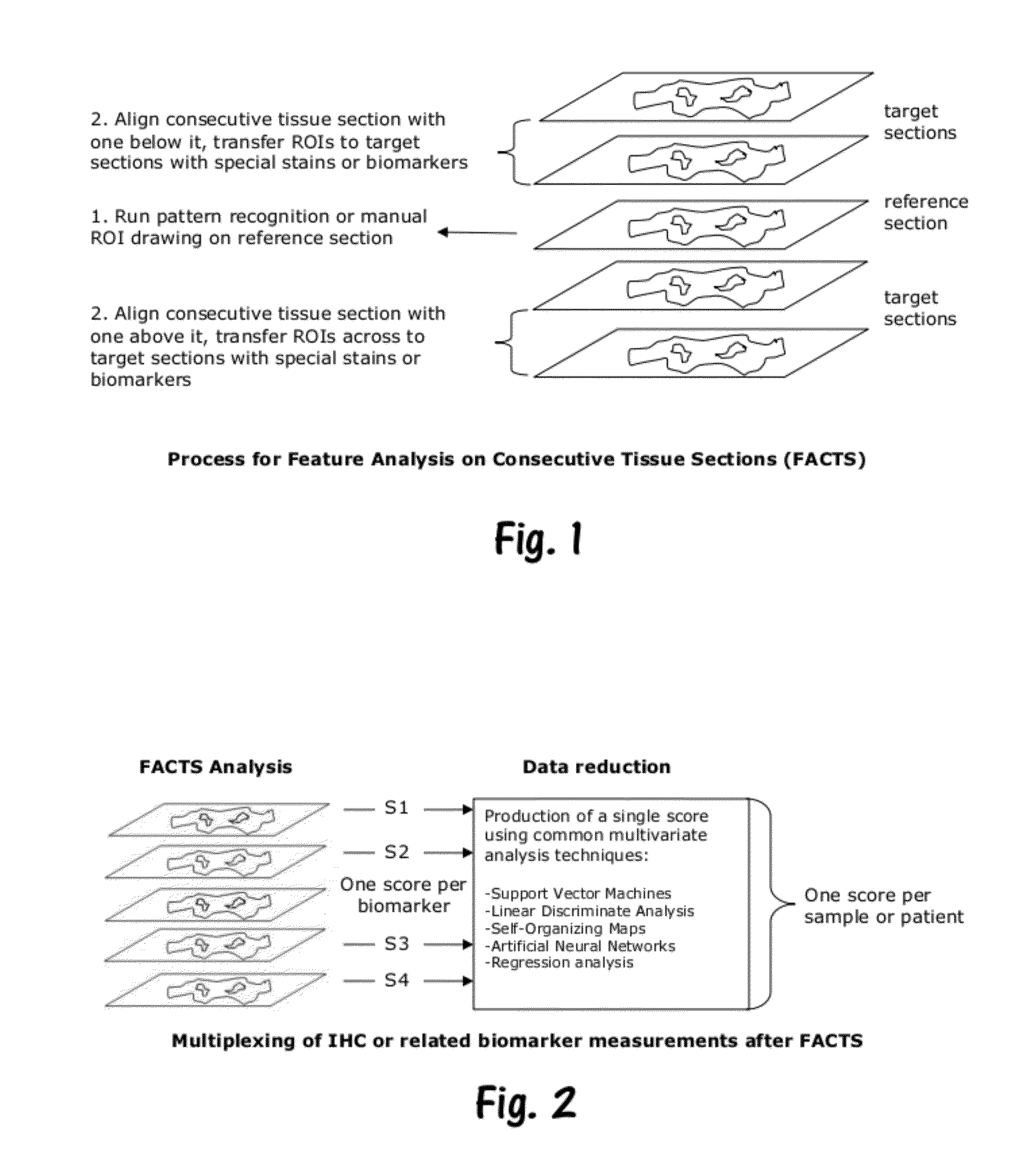Methods for feature analysis on consecutive tissue sections
a tissue section and feature analysis technology, applied in image analysis, image enhancement, instruments, etc., can solve the problems of increasing the probability of errors, tedious steps, handicapping precision advantages, etc., and achieve the effect of reducing the time required by pathologists
- Summary
- Abstract
- Description
- Claims
- Application Information
AI Technical Summary
Benefits of technology
Problems solved by technology
Method used
Image
Examples
Embodiment Construction
[0017]In the following description, for purposes of explanation and not limitation, details and descriptions are set forth in order to provide a thorough understanding of the embodiments of the invention. However, it will be apparent to those skilled in the art that the present invention may be practiced in other embodiments that depart from these details and descriptions.
[0018]In various embodiments of the invention, the above problems and limitations have been overcome with the use of a technique herein referred to as “Feature Analysis on Consecutive Tissue Sections”, or FACTS.
[0019]In a general embodiment of the invention, a method for feature analysis on consecutive tissue sections is provided, wherein a tissue block is sectioned into thin adjacent, cross-sections. Ideally, the adjacent cross sections are maintained in consecutive order, however it is possible to non-consecutive but relatively nearby “local” sections. Each of the cross sections is prepared on a microscope slide ...
PUM
 Login to View More
Login to View More Abstract
Description
Claims
Application Information
 Login to View More
Login to View More - R&D
- Intellectual Property
- Life Sciences
- Materials
- Tech Scout
- Unparalleled Data Quality
- Higher Quality Content
- 60% Fewer Hallucinations
Browse by: Latest US Patents, China's latest patents, Technical Efficacy Thesaurus, Application Domain, Technology Topic, Popular Technical Reports.
© 2025 PatSnap. All rights reserved.Legal|Privacy policy|Modern Slavery Act Transparency Statement|Sitemap|About US| Contact US: help@patsnap.com



